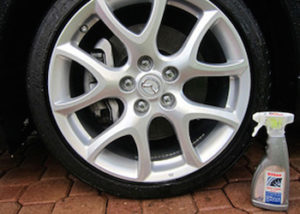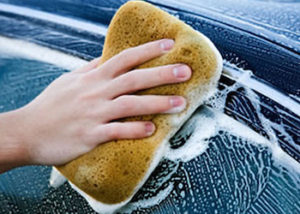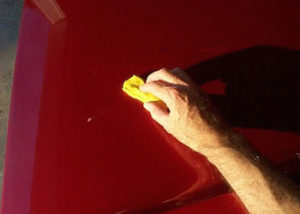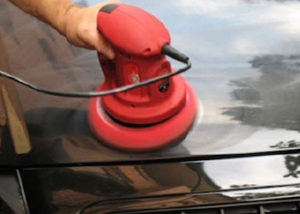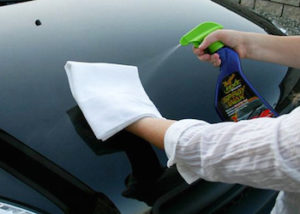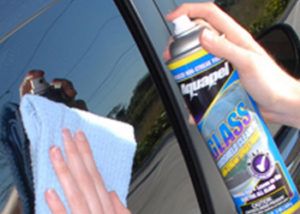10 tips to clean and detail your car like a Pro.
1.Evaluate the Interior and Exterior
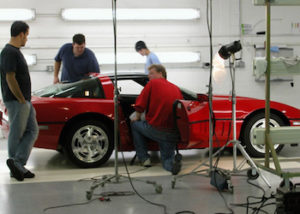
2.Start with Compressed Air and Stiff Scrub Brushes on Your Carpets
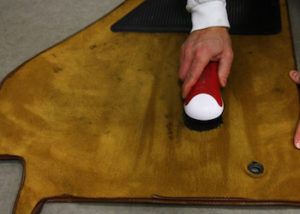
3.Duct Clean to Keep that New-Car Smell
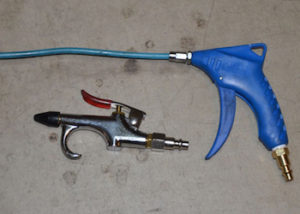
4.Use Non-Acid-Based Tire Cleaners
Pros use specially mixed acid solutions to clean dirty tires and to strip residue from new tires, as well as to get stubborn brake dust off wheels. But Hagaman says that weekend DIYers should use a nonacid product. Acid-based cleaners can cause bare alloy wheels to oxidize and pit, and they can damage wheels painted with color or clear coatings.
Use a degreaser on wheels, but avoid detergents because they can damage paint if splashed. Again, our pro says, remember to go in the correct order: Wheels and tires should be cleaned before you clean and protect your car’s paint.
5.The Best Carwash is a Hand Wash
“We recommend hand washing,” says Mike Pennington, director of training at auto-surface-products giant Meguiar’s. “Our customers enjoy doing it. It’s not a chore.” Hand washing gives you a chance to experience the tactile shape of your baby, and it’s also a great way to inspect and familiarize yourself with the car’s surfaces.
But, Pennington says, don’t be like the 60 percent of the population that uses dishwashing detergent when washing the car. It gets the car clean, but strips any protective wax coatings, exposing the vehicle to possible nicks, scratches, and stains. A carwash solution will preserve your car’s finish.
When water evaporates, it leaves minerals and dirt on the surface of your car. So when you’re done with the wash, dry the surface with a rubber-blade squeegee. One example is the California Water Blade, a large silicone squeegee that some of our photographers use to dry cars quickly during photo shoots.
6.Clean Paint is Bright and Shiny
Often it takes more than just a wash to get your paint clean. Bird droppings and man-made pollutants settle on the paint and, after a while, can saturate through wax and clear coatings into the color coat underneath. With your car still out of the sun, run your dry hand across the surface of the paint. If it feels rough, it needs to be cleaned.
There are two ways to clean contaminants, as well as stained and scratched old wax, off your paint: chemically or physically (though Pennington says it usually requires a combination of the two). Paint cleaners are liquids that remove wax, and also clean the top layer of the paint by removing unwanted environmental chemicals that have bonded to the paint. Cleaners can also remove small scratches called swirl marks from the paint.
The second method is to clean paint by rubbing a small block of paint-cleaning clay lubricated with a liquid cleaner wax. “It’s a safe way to remove contaminants,” Pennington says. “You don’t need a trained person or a machine.” Just make sure you don’t use a piece of clay if you have dropped it on the floor.
7.Polish to Smooth Out Paint
The purpose of polish is to smooth the surface of the paint, which will make it shine and help your car look newer. (Some polishes contain wax, which also protects the paint, but the wax doesn’t smooth the paint itself.) When you polish your paint, you can use an oscillating polishing machine. The pros use a rotating polishing machine, which works faster but will harm the paint if you’re not careful. For DIYers new to detailing, oscillating buffers are more forgiving.
The pros have a trick to measure their results: Hagaman tells us that they can hold a ruler perpendicular to the surface of the car and see how far its reflection stretches. The higher the number they can read in the paint, the glossier the paint.
8.Protect Paint with Wax
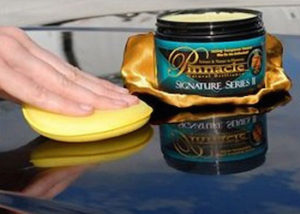
9.Wax Every Season
Between paint cleanings and wax applications, you’ll find you’ve picked up stains and scratches. Using liquid spray wax that can touch up these spots between waxings is a good idea but not a substitute for a real wax coating. Because there is no definitive way to tell when wax has worn off, stick to a schedule: Give your car a wax job every season if the vehicle spends every day outdoors.
Pennington says to forget the old tricks for telling when your car needs a wax, such as tossing a terry towel at the car and seeing if it will slide off. “Too many people take beading water to equal protection,” he explains. “If you go to a paint shop, pull a car right out of the paint room, and spill water on it, it will bead like crazy, but there’s not one layer of protection on it.”
10.Make the Glass Shine
Clean the glass last, because it will have grime and dirt from the other steps. And find a glass cleaner without ammonia, which most household glass cleaners contain. Ammonia is bad for vinyl upholstery and the instrument panel. Plus, it stinks.
You’ll get the best look if you buff glass with a microfiber cloth, which does a great job of getting rid of cleaner residue. That residue, as well as oils from your skin, causes streaks and spots on the inside of windows. Clean glass also looks great. Pro tip: To reach the inside of the rear window on sedans and coupes, use the back of your hand with the microfiber cloth and you’ll find you can get much farther down the glass.
